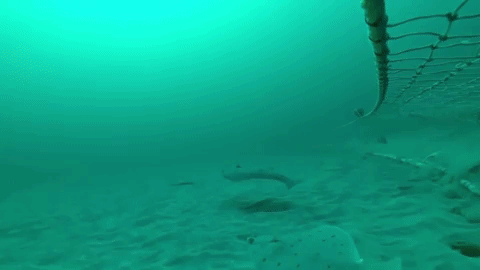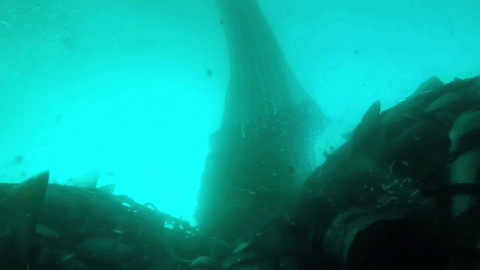Making demersal seines more precise

Fisheries researchers have tested the new seines on a fishing expedition with the Ballstadøy.
Photo: Ólafur Arnar IngolfssonPublished: 10.01.2018 Updated: 06.08.2021
One aim of the recently completed project was to find a way to separate species. The researchers discovered that you can use the behaviour of the fish to target particular species.
“Haddock swim upwards when they are guided into the seine. A horizontal wall in the entrance to the seine allows us to funnel the haddock and cod into two separate “chambers”. After that we can let one of the species out through escape gaps. This allows you to reduce the quantity of cod or haddock in your catch if you have a limited quota for one of the species”, explains project manager Ólafur Ingolfsson.
(See fact sheet on cod/haddock selection: hi.no/filarkiv/2015/03/seleksjon_torsk_hyse_snurrevad.pdf)
Another type of demersal seine enables fishers to target flounders at times and in places where they want to avoid catching fish like cod. This seine is dragged along the sea bottom, and its opening is only 60-70 cm high. This means it catches the flounders on the sea bed, whereas cod and haddock both swim over it and escape. Follow this link for more info on this specific demersal seine and see videos of it in action.

In another subproject, the researchers found a way to limit the total haul.
Helping fisher to catch less
“It seems counterintuitive that fishers may want to limit how many fish they catch, but sometimes there are simply too many. If you can’t limit your haul, you may catch five tonnes in one haul and fifty the next. Hauls that are too big lower the quality of the fish. They can also cause dangerous situations when the net full of fish becomes unmanageable for the vessel and crew. This is particularly true for smaller vessels”, says Ólafur Ingolfsson.
By tying a knot in the cod-end, the bag that the fish are funnelled into, for example half way along, you can control the maximum number of tonnes caught. A smaller cod-end means fewer fish and a bigger one means more fish. Once the cod-end is full, two escape gaps open to release excess fish. See animation:
This newly developed system for limiting hauls has already been included in Norwegian regulations.
Prototype unties the knot 30 metres underwater
In a spin-off project, researchers have tested a mechanical device for untying the knot in the cod-end. When you limit your haul by limiting the cod-end, its front half fills up with fish. When the seine rises up through the water, a pressure-activated mechanism releases the knot, opening the closed off section. This increases the volume of the cod-end.
“The fish are no longer as densely packed, which makes it easier for the crew to empty the seine. We expect the survival rate to increase, allowing more fish to be landed alive. But the main purpose of this device is to make it easier to handle the seine”, explains Ólafur Ingolfsson.

The project has been jointly financed with the Fishery and Aquaculture Industry Research Fund. The opening device has been developed in collaboration with the technology company Fosstech AS.
“The Directorate of Fisheries and the fishing industry have also been actively involved in the project. This successful partnership has produced results and solutions that are now being used by the industry”, concludes Ólafur Ingolfsson.
